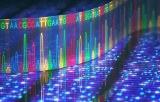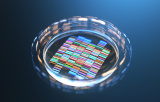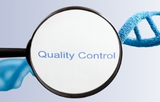Next-Generation Sequencing (NGS), also known as high-throughput sequencing, has transformed the field of genomics by enabling rapid, cost-effective analysis of DNA and RNA at unprecedented scales. This technology has evolved from traditional Sanger sequencing methods, offering massively parallel sequencing capabilities that generate millions to billions of reads in a single run. NGS applications span from clinical diagnostics and personalized medicine to evolutionary biology and environmental metagenomics.
Key Technologies and Platforms
NGS platforms can be categorized based on their sequencing chemistry and throughput such as:
- Illumina Platforms: These use SBS with fluorescently labeled nucleotides. Systems like NovaSeq and NextSeq produce billions of short reads (50–300 bp) with high accuracy (>99%). Ideal for whole-genome sequencing (WGS), RNA-seq, and variant calling.
- Ion Torrent : Employs pH-sensitive detection during nucleotide incorporation. Offers rapid turnaround but slightly lower accuracy for homopolymer regions.
Applications in Research and Medicine
Genomics and Epigenomics
- Whole-Genome and Exome Sequencing: Identifies single-nucleotide variants (SNVs), insertions/deletions (indels), and copy number variations (CNVs) in diseases like cancer and rare genetic disorders.
- Epigenetic Profiling: Techniques like ChIP-seq and ATAC-seq map histone modifications and chromatin accessibility.
Transcriptomics
- RNA-Seq: Quantifies gene expression, detects alternative splicing, and identifies non-coding RNAs. Single-cell RNA-seq (scRNA-seq) via platforms like 10x Genomics reveals cellular heterogeneity.
Metagenomics and Microbiomics
- Analyzes microbial communities in environments or human microbiomes, aiding in pathogen detection and ecological studies.
Clinical Applications
- Precision Medicine: NGS panels (e.g., for oncology) guide targeted therapies, as in identifying BRCA mutations for PARP inhibitors.
- Non-Invasive Prenatal Testing (NIPT): Detects fetal aneuploidies from maternal blood.
- Infectious Disease Surveillance: Real-time sequencing during outbreaks, such as COVID-19 variant tracking.
Next-Generation Sequencing has redefined our understanding of life at the molecular level, fostering breakthroughs across disciplines. Its evolution from a niche tool to a cornerstone of modern science underscores the power of technological innovation. As NGS continues to advance, it promises to unlock new frontiers in health, environment, and beyond, provided we address its challenges responsibly.






